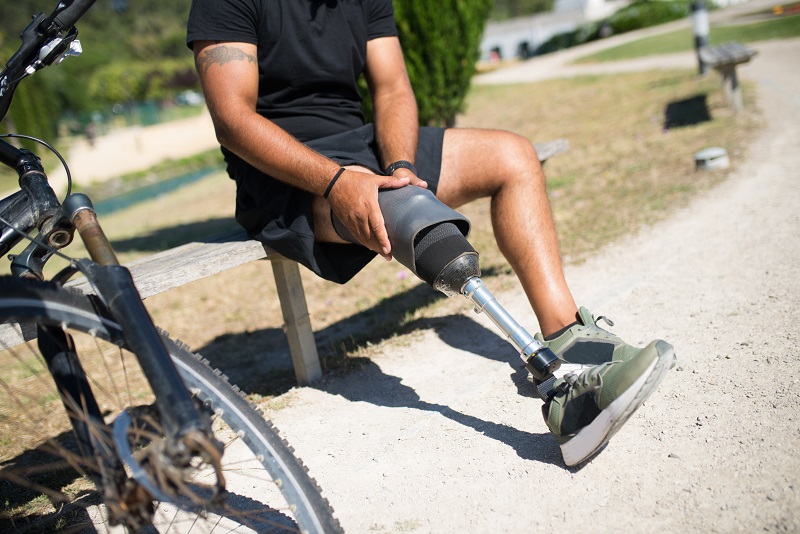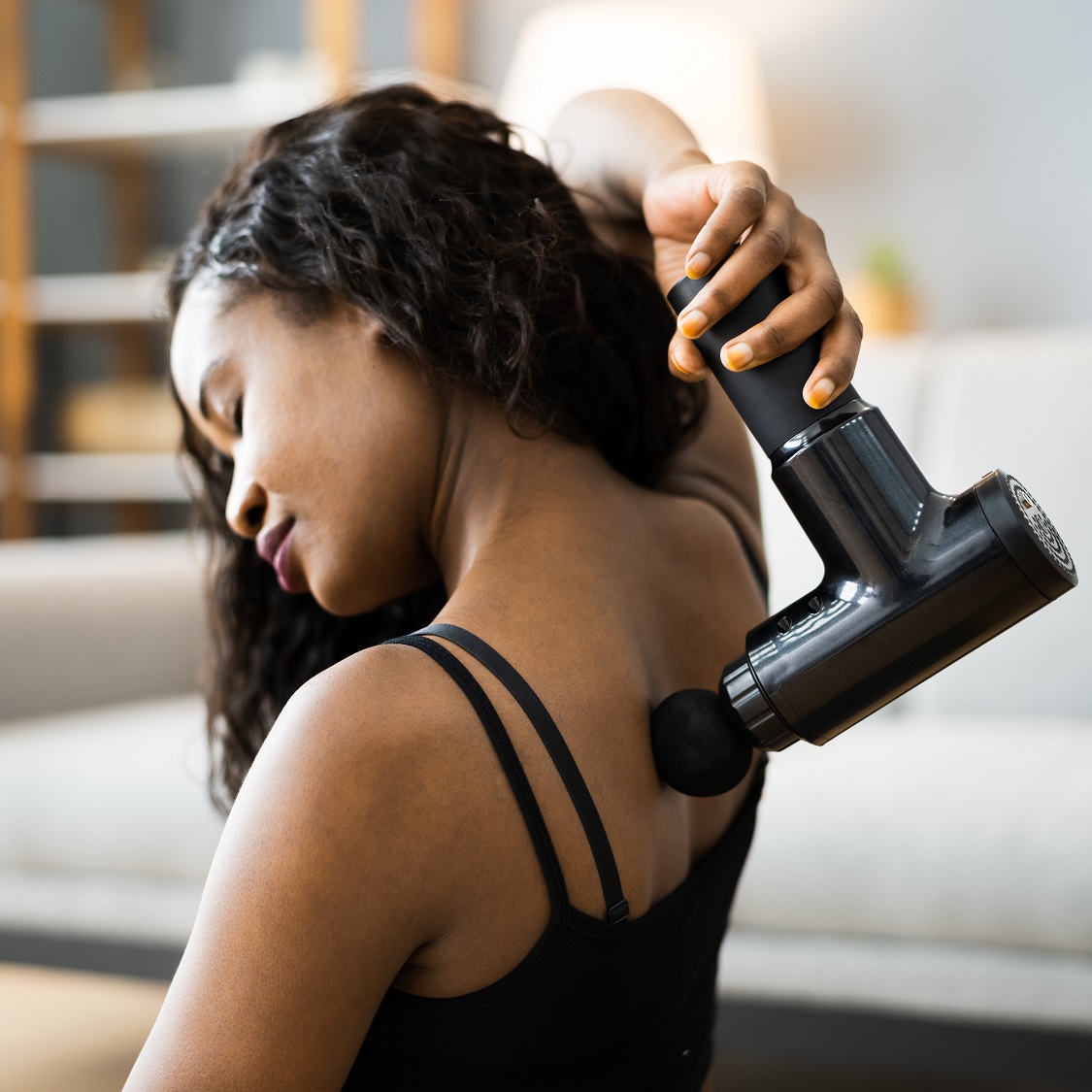10 Ways Doctors Relieve Phantom Limb Pain for Amputees

September 28, 2022
After amputation, it’s normal for nearly every patient to experience the feeling that their amputated body part is still there. However, approximately 60 percent of amputees develop a condition called phantom limb pain (PLP), which results in disturbing sensations such as pain, tingling, cramping, burning, pressure, or itching where their body part used to be.
“A majority of patients who experience PLP have symptoms that subside within the first few months after amputation. Between 20-50 percent of patients with PLP have symptoms that last longer,” says Heikki Uustal, M.D., a physical medicine and rehabilitation physician who has provided post-amputation care for patients at JFK Johnson Rehabilitation Institute for 35 years.
What causes PLP?
Although many people assume PLP is simply caused by nerve irritation after surgery, it’s actually a more complex central neurological problem.
“After amputation, it takes time for the central nervous system to adapt to the loss of the body part,” adds Dr. Uustal. “As a result, the brain or spinal cord receive a large amount of mixed or unexpected signals from the remaining nerves that results in PLP.”
Additionally, people who had pain or other sensations in their limb before amputation — such as pain related to an injury, or tingling and numbness due to a vascular or neurologic condition — are more likely to experience those same sensations after the limb has been amputated.
How is PLP treated?
PLP treatments fall into two categories: medication and non-medication. Physicians may use a combination of medication and non-medication treatments to provide symptom relief.
Treatment options include:
- Medications. Medications block pain signals to the brain or spinal cord. Common choices include a tricyclic antidepressant medication called amitriptyline and anticonvulsant medications such as gabapentin and pregabalin.
“Many physicians put patients on a preventive dose of medication after surgery to reduce the risk of developing PLP,” Dr. Uustal says.
- Psychological distraction. Routine activities such as working, studying, reading, or exercising can provide a distraction that reduces PLP symptoms.
- Acupuncture. Acupuncture is a traditional Chinese medicine practice that involves inserting needles into certain points in the body to balance energy flow. Acupuncture may help to regulate the central nervous system and reduce nerve signals that cause bothersome sensations in the amputated limb.
- Massage. Massage can desensitize and calm overactive nerve signals.
- Hypnosis. Clinical hypnosis may improve pain control.
- Medical marijuana. CBD/THC compounds in marijuana may decrease disturbing sensations.
- Hot/cold therapy. Using a heating pad or ice pack on the residual limb can reduce PLP symptoms.
- Transcutaneous electrical nerve stimulation (TENS). TENS units deliver a small electrical impulse through electrodes attached to the residual limb.
- Virtual reality (VR) and mirror therapy. VR therapy uses VR technology to create a digital illusion of having the amputated body part. Using a mirror to create a reflection of the amputated body part can create a similar illusion. This technique works by “tricking” the brain into believing the limb is still there, which may calm unexpected nerve signals.
- Imagery. Similar to VR and mirror therapy, imagining having or moving the amputated body part can reduce bothersome sensations.
An amputation technique called targeted muscle reimplantation (TMR), which connects nerves together or connects them to muscles, may reduce the risk of PLP. Implanting nerve stimulators close to the nerve is another, more-invasive option to treat severe PLP.
“Nerves can only handle so much stimuli, so when we distract the irritated nerve with other stimuli, such as heat, cold, touch, or electrical stimulation, it will often block disturbing PLP sensations,” says Dr. Uustal.
Dr. Uustal emphasizes that it’s important for patients to speak up if they are experiencing symptoms of PLP.
“There are many therapeutic options, but what will work for each patient is different,” says Dr. Uustal. “Patients often have to try several different therapies before finding the one that provides the most benefit, but it’s important to recognize that there is help available if PLP symptoms are impacting everyday activities and quality of life.”
Next Steps & Resources:
- Meet our source: Heikki Uustal, M.D.
- To make an appointment with Dr. Uustal or a doctor near you, call 800-822-8905 or visit our website.
- Learn about and the Limb Amputation Rehabilitation Program at Hackensack Meridian Health.
The material provided through HealthU is intended to be used as general information only and should not replace the advice of your physician. Always consult your physician for individual care.
Find a doctor near me
Clinical Contributors

How Loud is Too Loud?
Protect your hearing! Learn how loud sounds damage ears & prevent hearing loss. JFK Johnson Rehabilitation Institute audiologist offers expert advice. Get help today.

Can Hearing Aids Make Hearing Worse?
Improve your hearing. Learn if hearing aids can worsen hearing loss. Find expert advice and resources to help you hear better.
Find a doctor near me

Do Topical Patches Work for Back Pain?
Topical patches for back pain? Learn about capsaicin, lidocaine, and other options from Dr. Delavaux. Find pain relief solutions. Call 800-822-8905.

How to Relieve Back Pain Without Surgery
Relieve back pain without surgery. Dr. Groves shares 8 non-surgical approaches including physical therapy and injections. Find relief today. Call 800-822-8905.

Are Massage Guns Good for You? A PT Explains
Learn if massage guns benefit you. A physical therapist explains proper use, benefits, and when to avoid them. Schedule an appointment today.

Head Trauma: Know When to Get Help
Head Trauma: Know when to seek help. Learn about symptoms, treatment, and when to get emergency care from leading doctors. Call 800-822-8905.

